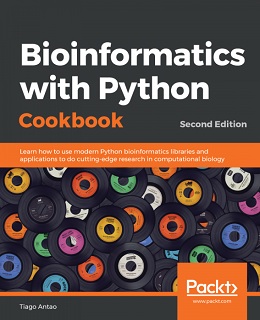Bioinformatics with Python Cookbook – Second Edition
eBook Details:
- Paperback: 360 pages
- Publisher: WOW! eBook; 2nd Revised edition (November 30, 2018)
- Language: English
- ISBN-10: 1789344697
- ISBN-13: 978-1789344691
eBook Description:
Bioinformatics with Python Cookbook, 2nd Edition: Discover modern, next-generation sequencing libraries from Python ecosystem to analyze large amounts of biological data
Bioinformatics is an active research field that uses a range of simple-to-advanced computations to extract valuable information from biological data.
This book covers next-generation sequencing, genomics, metagenomics, population genetics, phylogenetics, and proteomics. You’ll learn modern programming techniques to analyze large amounts of biological data. With the help of real-world examples, you’ll convert, analyze, and visualize datasets using various Python tools and libraries.
This book will help you get a better understanding of working with a Galaxy server, which is the most widely used bioinformatics web-based pipeline system. This updated edition also includes advanced next-generation sequencing filtering techniques. You’ll also explore topics such as SNP discovery using statistical approaches under high-performance computing frameworks such as Dask and Spark.
- Learn how to process large next-generation sequencing (NGS) datasets
- Work with genomic dataset using the FASTQ, BAM, and VCF formats
- Learn to perform sequence comparison and phylogenetic reconstruction
- Perform complex analysis with protemics data
- Use Python to interact with Galaxy servers
- Use High-performance computing techniques with Dask and Spark
- Visualize protein dataset interactions using Cytoscape
- Use PCA and Decision Trees, two machine learning techniques, with biological datasets
By the end of this Bioinformatics with Python Cookbook, Second Edition book, you’ll be able to use and implement modern programming techniques and frameworks to deal with the ever-increasing deluge of bioinformatics data.




